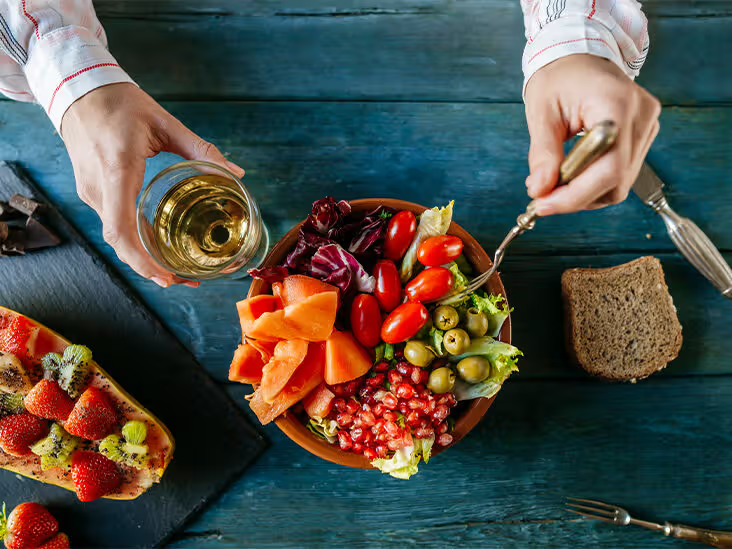
Picture this: you’ve just returned from the farmer’s market, arms laden with vibrant apples, juicy peaches, and a cluster of ripe bananas, their sweet aroma filling the air. You’re excited to savor these treasures over the week, but by day three, your bananas are mushy, your apples have lost their crispness, and those peaches? They’re starting to smell like a science experiment gone wrong. Sound familiar? I’ve been there, and it’s a heartbreak I wouldn’t wish on anyone. Proper fruit storage is the key to keeping your produce fresh, flavorful, and ready to enjoy. In this guide, we’ll dive into the do’s and don’ts of fruit storage at home, sharing expert tips, practical advice, and a few lessons I’ve learned the hard way to help you make the most of your fruit haul.
Why Fruit Storage Matters
Fruit is nature’s candy, packed with vitamins, fiber, and antioxidants that boost your health. But improper storage can lead to waste, spoilage, and a dent in your grocery budget. According to the USDA, about 30–40% of food in the U.S. goes to waste, with fresh produce being a major culprit. Storing fruit correctly not only extends its shelf life but also preserves its taste and nutritional value. Whether you’re a busy parent, a meal prepper, or just someone who loves a good fruit salad, mastering fruit storage can save you time, money, and disappointment. Let’s explore the essentials, starting with the biggest do’s to keep your fruit at its peak.
The Do’s of Fruit Storage
1. Know Your Fruit’s Needs
Every fruit is unique, with its own storage preferences. Tropical fruits like mangoes and pineapples thrive at room temperature until ripe, while berries and grapes demand the chill of the fridge. I learned this the hard way when I left strawberries on the counter for a day, only to find them soft and moldy. To get it right, research the ideal storage conditions for each fruit. For instance, the University of California Agriculture and Natural Resources recommends storing apples in the fridge at 30–35°F to maintain crispness for up to a month, while bananas should stay at room temperature to avoid chilling injuries that turn their flesh brown.
- Actionable Tip: Create a quick reference chart for your kitchen, listing fruits and their ideal storage conditions. Group them by room temperature (e.g., bananas, avocados) and fridge-friendly (e.g., berries, cherries).
2. Wash Fruit Just Before Eating
It’s tempting to rinse all your fruit as soon as you get home, but moisture is the enemy of freshness. Excess water can promote mold and bacterial growth, especially in delicate fruits like raspberries or blueberries. According to FoodSafety.gov, washing fruit right before consumption keeps it dry and extends its shelf life. I once washed a batch of grapes to save time, only to find them slimy within days. Now, I rinse only what I’m about to eat, and my grapes stay plump and fresh for weeks.
- Actionable Tip: Store unwashed fruit in breathable containers or perforated bags to allow air circulation and prevent moisture buildup.
3. Use Proper Containers
The way you store fruit matters as much as where you store it. Plastic bags, breathable mesh bags, and specialized containers can make a big difference. For example, apples release ethylene gas, which speeds up ripening in nearby fruits. To prevent this, store apples in a separate plastic bag with holes for ventilation. The Produce for Better Health Foundation suggests using produce-specific containers, like berry keepers with adjustable vents, to control humidity and airflow.
- Actionable Tip: Invest in reusable produce bags or containers with ventilation. For a budget-friendly option, poke holes in a ziplock bag to mimic the effect.
4. Store Ripened Fruit in the Fridge
Once fruit reaches peak ripeness, move it to the refrigerator to slow further ripening. Peaches, plums, and nectarines are perfect examples—leave them on the counter to ripen, then refrigerate to maintain their juicy texture. I’ve found that this trick keeps my peaches sweet and firm for an extra week. The FDA notes that refrigeration at 35–40°F is ideal for most ripened fruits, except for tropical ones like mangoes, which can develop off-flavors when chilled too early.
- Actionable Tip: Check ripeness daily by gently pressing fruit. If it yields slightly, it’s ready for the fridge.
5. Freeze for Long-Term Storage
Freezing is a game-changer for fruit you can’t eat in time. Berries, mango chunks, and even sliced bananas freeze beautifully, perfect for smoothies or baking. According to Clemson University’s Home & Garden Information Center, freezing fruit at 0°F preserves its quality for up to a year. My go-to is to lay berries on a baking sheet to freeze individually before transferring them to a freezer bag—this prevents clumping and makes portioning a breeze.
- Actionable Tip: Label freezer bags with the fruit type and date to track freshness. Add a sprinkle of lemon juice to cut fruits like apples to prevent browning.
The Don’ts of Fruit Storage
1. Don’t Store All Fruits Together
Mixing fruits can be a recipe for disaster, thanks to ethylene gas. High-ethylene producers like apples, avocados, and tomatoes can cause low-ethylene fruits like berries or citrus to ripen too quickly and spoil. I once stored apples and strawberries in the same fridge drawer, only to find my berries mushy and overripe in two days. The University of Maine Cooperative Extension advises keeping ethylene producers separate from sensitive fruits to avoid premature spoilage.
- Actionable Tip: Use separate fridge drawers or containers for ethylene producers and sensitive fruits. A simple divider can save your produce.
2. Don’t Ignore Temperature Zones
Your kitchen and fridge have microclimates, and ignoring them can ruin your fruit. For example, don’t store bananas in the fridge—they’ll turn black and lose flavor due to chilling injury. Conversely, don’t leave berries on the counter, as they’ll mold quickly. The National Center for Home Food Preservation emphasizes that improper temperature can accelerate spoilage, so match your fruit to the right zone.
- Actionable Tip: Keep a thermometer in your fridge to ensure it stays between 35–40°F, and store tropical fruits on a cool, shaded countertop away from direct sunlight.
3. Don’t Overcrowd Your Storage
Piling fruit in a cramped bowl or drawer restricts airflow, trapping moisture and speeding up decay. I made this mistake with a batch of oranges, stacking them in a tight bowl, only to find the bottom ones soft and moldy. Proper spacing allows air to circulate, keeping fruit fresh. The Oregon State University Extension Service recommends storing fruit in a single layer when possible to maximize airflow.
- Actionable Tip: Use shallow baskets or trays for countertop storage and avoid stacking fruit in fridge drawers.
4. Don’t Forget to Check Regularly
Fruit can go from perfect to past-its-prime in a flash, so don’t let it sit unchecked. A single overripe fruit can spoil the bunch by releasing ethylene or fostering mold. I learned this lesson when one bad apple (literally) turned my entire fruit drawer into a mushy mess. Regular checks help you catch issues early and use ripe fruit before it’s too late.
- Actionable Tip: Set a weekly reminder to inspect your fruit, removing any that’s overripe or showing signs of spoilage.
5. Don’t Store Fruit Near Strong Odors
Fruits like apples and pears can absorb odors from nearby foods like onions or garlic, altering their flavor. I once stored apples next to a bag of onions, and my next apple pie tasted suspiciously savory. The Washington State University Extension warns that strong-smelling foods can taint delicate fruits, so keep them apart.
- Actionable Tip: Store fruits in a dedicated fridge drawer or sealed container to shield them from odors.
Comparison Table: Fruit Storage Guidelines
Fruit Storage Cheat Sheet
| Fruit | Best Storage Location | Ideal Temperature | Ethylene Producer? | Storage Tip |
|---|---|---|---|---|
| Apples | Refrigerator | 30–35°F | Yes | Store in a perforated bag, away from berries |
| Bananas | Room Temperature | 60–70°F | Yes | Keep away from other fruits |
| Berries | Refrigerator | 35–40°F | No | Store unwashed in a breathable container |
| Citrus (Oranges) | Refrigerator | 35–40°F | No | Store in a mesh bag for airflow |
| Peaches | Room Temp (until ripe), then Refrigerator | 35–40°F (when ripe) | Yes | Refrigerate only after ripening |
| Mangoes | Room Temperature | 60–70°F | Yes | Refrigerate only when fully ripe |
This table summarizes key storage guidelines to help you keep your fruit fresh and flavorful.
Special Considerations for Common Fruits
Berries: Handle with Care
Berries are delicate and prone to mold, so handle them gently. Store them unwashed in their original container or a breathable berry keeper, and place them in the coldest part of your fridge (usually the back of the top shelf). I’ve found that lining the container with a paper towel absorbs excess moisture, keeping my raspberries fresh for up to two weeks.
Tropical Fruits: Room Temperature Rules
Mangoes, pineapples, and bananas prefer the warmth of your countertop until they’re ripe. Once ripe, move mangoes and pineapples to the fridge to extend their life. Bananas, however, should stay out—refrigeration causes their skins to blacken, though the fruit inside remains edible.
Apples and Pears: The Long-Lasting Heroes
Apples and pears can last for months if stored properly. Keep them in a cool, humid fridge drawer, ideally in a perforated plastic bag. Check them regularly, as one spoiled fruit can affect the rest. I like to wrap each apple in newspaper for extra protection, a trick I picked up from my grandmother.
FAQ: Common Fruit Storage Questions
Q: Can I store bananas with other fruits?
A: Avoid storing bananas with other fruits, as they release high levels of ethylene gas, which can speed up ripening and spoilage. Keep them on a separate countertop or in a hanging banana basket to promote airflow.
Q: How do I know if fruit is still good to eat?
A: Check for signs of spoilage like mold, off-odors, or mushy textures. Small blemishes can often be cut away, but if the fruit smells fermented or has widespread mold, it’s best to discard it.
Q: Should I refrigerate all my fruit?
A: No, some fruits like bananas, mangoes, and avocados do best at room temperature until ripe. Refrigerate only after they reach peak ripeness, except for bananas, which should stay out.
Q: How can I revive wilted fruit?
A: For slightly wilted fruits like apples or pears, soak them in cold water for 10–15 minutes to restore crispness. For berries, this won’t work—use them in smoothies or jams if they’re past their prime.
Q: Can I freeze all types of fruit?
A: Most fruits freeze well, including berries, bananas, and mangoes. However, high-water-content fruits like watermelon may become mushy when thawed, so use them in frozen recipes like sorbets.
Conclusion: Make Your Fruit Last and Your Wallet Happy
Storing fruit at home doesn’t have to be a guessing game. By following these do’s and don’ts, you can keep your produce fresh, flavorful, and ready to enjoy, whether you’re biting into a crisp apple or blending a smoothie with perfectly frozen berries. The key is understanding your fruit’s needs, using the right storage methods, and checking regularly to catch issues early. Not only will you reduce food waste, but you’ll also save money and make every grocery trip count. Start small—try organizing your fridge drawers or investing in a few breathable containers—and watch how much longer your fruit stays vibrant. Next time you’re at the market, grab those peaches with confidence, knowing you’ve got the tools to keep them perfect for days to come. What’s your favorite fruit to store, and how do you keep it fresh? Share your tips below, and let’s keep the fruit love going strong!
